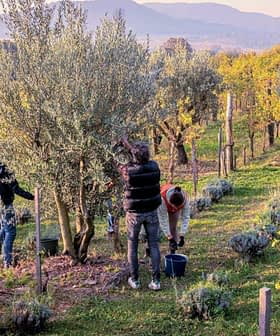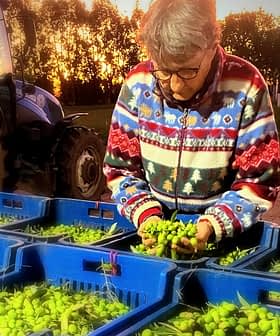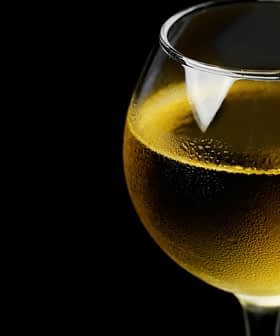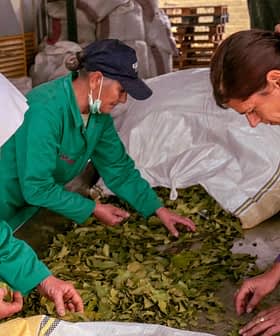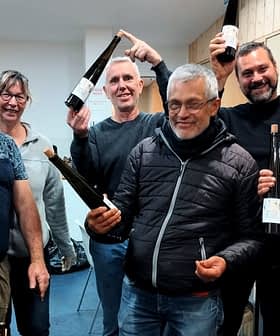The Núñez de Prado Obession with Perfection
The article discusses the history and operations of the Núñez de Prado family, known for their olive oil production in Baena, Spain since 1795. The family’s dedication to quality, organic production, and innovative methods has led to their EVOOs being highly esteemed and exported worldwide, with a focus on transparency and sustainability in their practices.
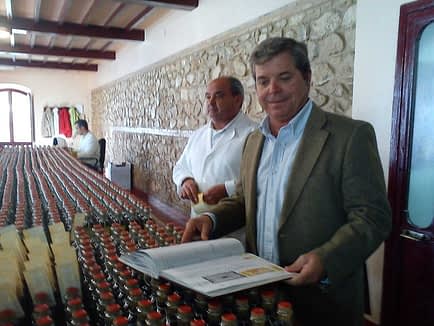
“Once, I dropped in and mentioned that I’d been to Baena to see the Núñez de Prado brothers. His eyes widened. It was as though I’d told a country Imam that I had just returned from Mecca.”
So reads a reference in Mort Rosenblum’s book “The Life and Lore of a Noble Fruit” to the seventh generation of the Núñez de Prado dedicated to olive oil production.
The legendary family bought its first mill in 1795 but was mainly focused on wine-making until the phylloxera plague ruined its vineyards. It then turned to make olive oil with a passion that persists today.
Earlier this month, the European Program for Olive Oil Promotion hosted a group of English and French-speaking journalists in Córdoba. The itinerary included a visit to the family’s Santa Lucía organic olive oil plant in Baena, in the province´s south-east, to see a 1943-style mill and a modern one in use on the same premises.
Olive Oil Times was there and spoke to one of the brothers, Felipe Núñez de Prado.
The Flower of EVOO
There are more than a dozen olive oil mills in Baena, a municipality with about 21,000 inhabitants and an olive oil denomination of origin (D.O.) of the same name. But this mill is arguably the most emblematic and is visited by about 20,000 tourists a year, many of whom stay for an olive oil tasting or typical miller’s lunch.
The first thing that strikes you on arrival is that it is in the center of a small, white town, not in the surrounding sea of olive trees. Núñez de Prado says that’s how it always used to be in Andalusia. Further out lie the four family estates, which span 700ha and 100,000 drip-irrigated olive trees.
The next surprise is that as it’s harvest time, freshly hand-picked olives are pouring down a chute, starting their two-hour metamorphosis into a slightly bitter, rather fruity green juice that will be rested for about two months before bottling. But even allowing for the different varieties — Picudo (native to Baena) for its floral aroma, Picual for its bitterness and longevity, and Hojiblanca for its sweetness — the mix of green, red, brown and black is striking. Teresa Pérez, director of the Interprofesional del Aceite de Oliva Español, explains that when the olive colors are mixed like this it’s the best time to harvest.
There is another surprise in the room where the mill’s premium product — Flor de Aceite (flower of olive oil) — is being hand-labeled and numbered to enhance traceability. Eleven kilos of olives are needed to obtain a liter of this unfiltered EVOO, which has a maximum acidity of 0.2 percent. Although a 500ml bottle sells from €12 – 22 ($16 – 29) in its far-ranging destinations, the on-premise price is just €5 ($6.65). And, apart from adjustment for inflation in export markets, the family, which has a turnover of €5 million ($6.6m) on its olive oil operations, says its olive oil prices have not increased in three decades.
The label says the 2011 Flor de Aceite has a wide range of fruity and floral aromas — hints of green olives, grass, oranges, lemons, and apples — and a slightly bitter and spicy aftertaste.
Production
While the First Cold Pressed Núñez de Prado extra virgin olive oil is extracted using hydraulic presses, the Flor de Aceite is a free-run oil that seeps from olive paste that has been interspersed in a high pile of grass mats and gradually squeezed. This alone is a stand-out image, as is the sight of three huge, rotating granite cones that first crush the olives to make the paste.
Unfiltered oil in transparent bottles: Why?
The family produces only EVOO, almost all of which it sells unfiltered, “because it has a stronger flavor, an interesting look and is something different,” Núñez de Prado says. “In Japan, for instance, people understand this and like their olive oil unfiltered.
“And we use transparent bottles because we want people to see the color of our oil, so they can recognize its quality. It’s the opposite of olive oil tastings, where the oil is in blue glass so the tasters aren’t influenced by nice colors.
“Using opaque or colored glass allows some producers to mix oils and mislead customers, who can’t see the color of what they are buying. The light in supermarkets is usually cold, so it’s not a problem, and our customers generally know to keep their oil away from light, and we also say it on the label.”
Exports
Of the annual extra virgin olive oil production of 1 million liters, almost all is pre-sold and about 85 percent is exported, mainly to Asia and within Europe.
“Japan takes 40 percent of our exports and we send 20 – 25 percent to the U.S. Our other main markets are France, Germany, the U.K., Belgium, Korea and China. Our clients are a mix of restaurateurs and household users.”
The brothers frequently travel overseas to promote their EVOOs. Felipe, who himself makes 8 – 9 trips a year, says it can be grueling but is essential to spread understanding about the quality of the oil.
Going green
Núñez de Prado becomes a little quiet when asked about his brother Andrés, an agricultural engineer who drove the plant’s modernization but died in 1998 at just 54. Rosenblum’s book says, “If there is a high priest of olives…it is Andrés Núñez de Prado.” Brothers Francisco, Antonio and Felipe, however, are carrying the mantle with equal dedication.
“Andrés was ahead of his time in lots of ways. For instance he was seen as crazy because he started harvesting in November but now the majority of growers start in November,” says Felipe Núñez de Prado proudly.
“He also had an agrochemical business so he knew about the increased use of pesticides and that they left a residue in olive oil. Back in 1986 he realized that the traditional method wasn’t working, you had to use too many chemicals, so we started organic production then and got certification in 1990 when it became available.”
Flies and fungus
The family has two main challenges on the organic front: fungus and the olive fruit fly.
” For the fungus, we put copper sulfate on the leaves and to reduce the flies we use plastic bottles with a sex pheromone to attract and trap the males. We put out the bottles in September and October and use about 3000 – 4000 of them,” Núñez de Prado explains.
Although there is aerial pesticide spraying in the region he doesn’t worry about contamination. “We are advised when they will be doing it and put up flags to mark our property, and the pilots know the areas to avoid.”
Food
Not only is Felipe passionate about making olive oil, he needs little excuse to splash it about. After a tasting session at the mill, he sloshed a healthy dose on his bread and poured (more than drizzled) more on some of the tapas being served, including the Manchego cheese and Iberian ham, before going on to explain why the tempura (which Andalusia claims to have introduced to Japan) and fried almonds had great flavor but weren’t greasy — they were cooked in olive oil. The ham and partridge croquettes and scrambled eggs at the following lunch, both fried in olive oil, were a particular hit. And dessert naturally continued the theme, with honey and olive oil drizzled over an orange, accompanied by an extra virgin olive oil ice cream.
Esteemed by connoisseurs and garlanded with prizes both in and beyond Spain, the Núñez de Prado EVOOs are liquid testimony to the philosophy of the family behind them: respect for nature, and use of both the best artisanal methods and the most innovative modern technology.


